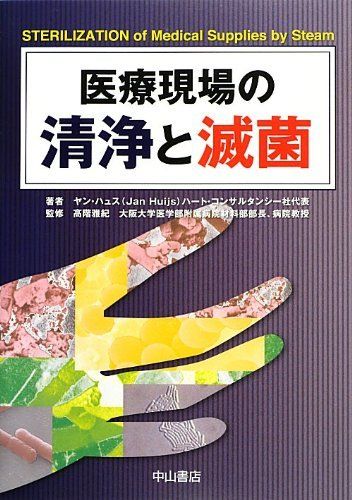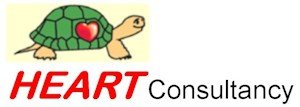Tag: sterilisation
Reisverslag. Monrovia, Liberia. 22-07-2015/10-07-2015. Training gaat beginnen
Van: Jan Huijs [mailto:jh@heartware.nl]
Verzonden: woensdag 22 juli 2015 12:14
Aan: ‘
Onderwerp: Groet uit Renkum. Terug en weer weg
Hallo ,
Het was zoooo goed je gesproken te hebben!
Afgelopen zaterdag veilig en wel hier in Renkum teruggekomen.
Het werd echt nog een hectische tijd. Echter de 5 autoclaven in twee ziekenhuizen zijn in gebruik en kon nog de training verzorgen.
Morgen alweer vertrek naar Japan. Presentaties (sterilisatie) in 4 steden. Ook dit wordt nog een hectische tijd.
Op 7 augustus hoop ik veilig en wel weer thuis te komen.
Dan wordt het echt hoog tijd je weer te ontmoeten! Oh man, heb onze ontmoetingen gemist!
Heel veel succes met de verhuizing; met de nieuwe komende tijd!
Groet ook aan Carien,
Allerbeste wensen hier uit Renkum,
Liefs,
Jan
Van: Jan Huijs [mailto:jh@heartware.nl]
Verzonden: vrijdag 10 juli 2015 22:45
Aan: ‘Yoko Huijs’
CC: Mariko Huijs NL (mariko_huijs@hotmail.com); Junko Huijs NL (junko_huijs@hotmail.com)
Onderwerp: Contactlenzen; training kan maandag beginnen!
Liefste Yokosan, Mariko, Junko,
Ben weer aan de slag gegaan. De KSG draait nu. Wel nog een kleine waterlekkage. Echter geen tijd meer om dat nog uit te zoeken.
We hadden zojuist een meeting met het management. Er is een nieuwe broeder, die uiteindelijk het roer hier gaat overnemen. Peter uit Sierra Leone. Veel rustiger dan Br. Ben. Minder hectisch. Denk dat ik met hem beter kan werken. Het ging erom dat nu de cursus echt op maandag gaat beginnen. Nu moeten de voorbereidingen toch echt gedaan worden. Het moet zondagavond allemaal op orde zijn. Daarna is er geen tijd meer om dingen nog te regelen. Het lijkt er opdat het nu toch kan gaan gebeuren. Voel me beter, maar moet voorzichtig blijven. Oververmoeidheid blijft op de loer liggen!
Ik houd jullie op de hoogte,
JeJan
医療現場の清浄と滅菌
 |
医療現場の清浄と滅菌登録情報 |
おすすめ度: この商品の最初のレビューを書き込んでください。
Amazon ベストセラー商品ランキング: 本 – 106,382位 (本のベストセラーを見る)
13位 ─ 本 > 医学・薬学 > 医学一般 > 衛生・公衆衛生学
カタログ情報を更新する、画像についてフィードバックを提供する、または さらに安い価格について知らせる
目次を見る
推薦のことば
このたび、滅菌の基本である高圧蒸気滅菌の原理と仕組みを中心に、初心者の方にも理解していただける教科書ともいえる素晴らしい書物が、高階雅紀先生(大阪大学医学部附属病院材料部部長、病院教授)のご尽力により日本語訳されて刊行されることになりました。「Sterilization of Medical Supplies by Steam(高圧蒸気滅菌による医療器材の滅菌)」です。著者はJan Huijs(ヤン・ハュス氏)で、オランダの王立技術者協会、同滅菌材料協会、滅菌供給業務世界会議の要職を務めているHEART Consultancy(ハート・コンサルタンシー)社の代表です。
我が国においては、日本医療機器学会の認定として第二種滅菌技士が2000年に、第一種滅菌技師が2003年に誕生して以来、滅菌に関する知識や技術水準は飛躍的に進歩を遂げてきましたが、欧米諸国での滅菌に関する技術や考え方を学ぶ機会は十分とは言えません。医師および看護師の教育を担う医育機関での滅菌に関する教育カリキュラムがまだ充実していないからです。
本書を覗いてみると、全体として三部構成となっており、第一部「概論」では、高圧蒸気滅菌に焦点を絞って滅菌工程の理論を詳細に解説しています。第二部の「日常の蒸気滅菌業務」では、器材の洗浄から滅菌、そして搬送・保管などの一連の業務について解説しています。第三部の「滅菌技術者のための項」では、蒸気滅菌器の補修と保守をおこなう技術者を対象として、その業務に関するガイドラインなどを紹介しています。
滅菌業務に係るすべてのスタッフに焦点を当てて大変わかりやすく書かれており、あたかも小説を読んでいるがごとく吸い込まれてしまいます。特に滅菌に関する国際基準であるInternational Organization for Standardization(ISO: 国際標準化機構)の難解な言い回しなどが、とても理解しやすく、図表や絵を示しながら書かれている点は大変感銘を受けました。
滅菌サプライ部門で働くスタッフは、本書により普段疑問に思っている事や、誤解している事などが明らかとなり、理解した上で業務に関わることができるようになります。これは、滅菌技術の水準を高めるばかりか、医療安全も考慮した日常業務に携わることが可能となり、患者安全に向けて大変意義あることです。
執筆者のJan Huijs氏は、母国のオランダでの活躍のみならず、かねてより中央アフリカ共和国やカメルーン、ナイジェリア、南アフリカ、タンザニアなどアフリカ諸国においても活動しています。医療機器の滅菌に関する訓練や講義などを積極的におこなって、その地域の滅菌に関するレベルの向上に寄与しています。我が国に対しても、2012年開催の第87回日本医療機器学会(札幌)および第13回World Forum for Hospital Sterile Supply 2012(WFHSS: 滅菌供給業務世界会議2012)(大阪)での講演に来日するなど、積極的に活動しています。
本書が、滅菌サプライに関わりのある皆様の日常業務にたいへん役立つものと確信しております。必携の書として活用していただけることを切望いたします。
2012年7月吉日
東京医療保健大学/大学院 教授
大久保 憲
Translation
This Japanese version of the book was translated and produced through
Meilleur
Publisher:
Order
You can order this book at Amazon.com
